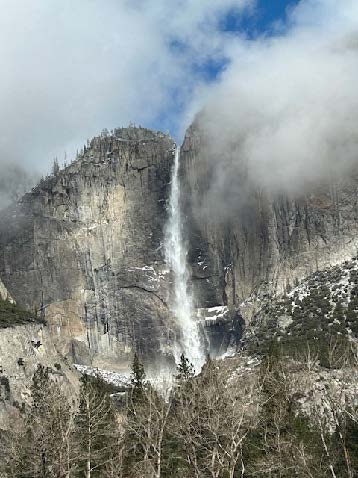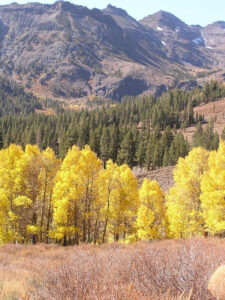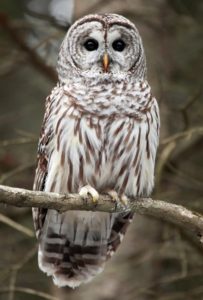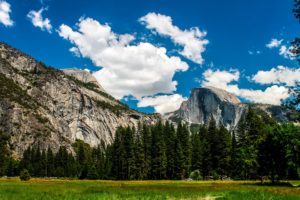
Our newsletter is filled with in-depth, informative articles on timely environmental issues and topics affecting the Northern Yosemite region.
We mail our newsletter out once every quarter, and it contains full color photos from the region, and relevant news about issues affecting the local environment. Articles feature issues we are working on, actions we are taking, victories we have made, and other stories related to nature in this great area.
If you would like to read one of our newsletters before signing up, you can find our latest below.
Would you like to be on our mailing list so that you can receive our newsletter at your home? Email Chelsea at [email protected], and she will get you added. We promise that we will never share your personal information with any third party for any reason.
Latest Quarterly Newsletters
(PDFs of hard copies that were mailed to members)
Spring 2025 (click here to read or download newsletter)
- CSERC's "Wild Wonders" photo contest is open!
- Lay-offs and funding freezes affect the U.S. Forest Service, the Bureau of Land Management, and the National Park Service
- New policy makes timber production the priority on federal lands
- Randy Moore is out; Tom Schultz is in as new Forest Service Chief
- For rewarding fun, sign up to be a CSERC volunteer
- Wildflowers are in bloom, so go out and enjoy the displays!
- A few suggested day hikes to enjoy the dazzling wildflowers
- Cloud-seeding is widely applied across the Sierra Nevada region despite little evidence that it definitively enhances precipitation
- Discovering a mighty canyon live oak with truly massive limbs
- Wolves continue to expand their range across California
- Can you identify waterfalls of the local region?
Winter 2024/25 (click here to read or download newsletter)
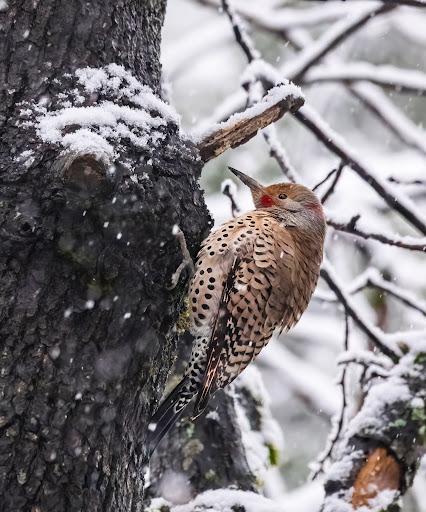
- For many species, hibernation is an amazing “time out”
- Many forest enthusiasts may not know about yew trees in the region
- After years of planning and preparation, a prescribed burn project reduces fuels in the South Grove at Calaveras Big Trees State Park
- Whether to use herbicides on fuel breaks in the national forests of the region is a controversial issue that divides forest stakeholders
- The Sierra Nevada red fox is still one of the most endangered, at-risk species across the vast mountain region
- Public now has opportunity to comment on massive wood pellet project
- A maze of unauthorized, user-created mountain bike trails has been built in the Stanislaus Forest - Will Forest officials just make them legal?
- The end of the year is hopefully a good time to ask you to identify what’s most important to you. What should CSERC prioritize in 2025?
- Please think how you might encourage a new donor to contribute to CSERC and trigger matching donation offers from two sources
- Looking out to what lies ahead on the horizon can be a challenge
Fall 2024 (click here to read or download newsletter)
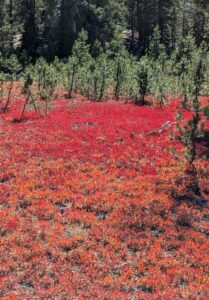
- From top to bottom, the forest's transition to fall colors has begun
- The planning process for managing vehicles and visitors in Yosemite Park shifts from public comments to the crafting of a final decision
- Latest update about the proposed nation-wide Old Growth policy
- CSERC volunteers truly ROCKED this field season, making a positive and lasting impact in our local forest and in Yosemite
- Livestock overgrazing and trampling in Stanislaus Forest meadows pose threats to water quality and fragile ecosystems
- Forest Service decision for SERAL 2.0 project approves a huge amount of treatments...
- The MAC Project is the biggest local forest treatment ever proposed
- GSNR: A plan that's already generated love, hate, outcries, and indifference
- What is that "skinny chicken" bird?
- It takes two to make a meaningful partnership
- Prolific amounts of cones and acorns are falling this year
Summer 2024 (click here to read or download newsletter)
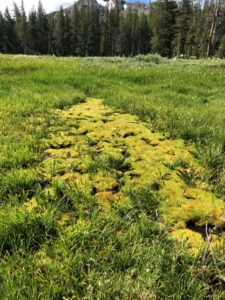
- This is a fen, and here's why fens need protection
- As the CA spotted owl moves closer to being formally listed as “threatened,” the Forest Service releases new policies for projects
- At the same time, a new U.S. Fish and Wildlife Service plan will authorize the lethal removal of barred owls to save CA spotted owls
- Workdays offer chance to have fun and make a difference
- The national Old-Growth Policy shifts to the analysis of alternatives, but none of the strategies actually prohibit cutting big, old trees
- "Here's why we donate regularly to CSERC."
- Unlike most newsletters, this one emphasizes how much we need you and other members to help us grow our base of contributors
- Here are some of the key efforts that CSERC is doing this summer
- Final wildlife damage plan by state/federal agencies dismisses input from CSERC and others who asked for less controversial methods
- Interested in some special destinations to visit this summer?
Spring 2024 (click here to read or download newsletter)
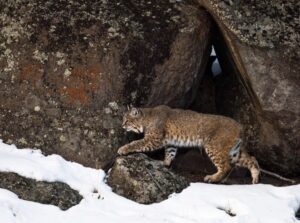
- For early spring wildflowers, visit one of our local river canyons
- Latest update on the highly important Yosemite Park visitor access plan
- A tragic attack attack by a mountain lion reminds of the risks that exist in the forest ecosystem and elsewhere in the state
- CSERC steps away from one stakeholder group, even as we intensify our efforts with the ACCG collaborative group
- Dogwood flowers are sure to impress again this spring!
- Do CSERC's efforts to protect nature in our region matter to you?
- CSERC camera stations detect the rare and elusive fisher in the Stanislaus National Forest
- CSERC shares detailed input for key state and national wildlife policies
- 2024 "Celebrate Winter" photo contest winners amaze our judges
Fall/Winter 2023 (click here to read or download newsletter)
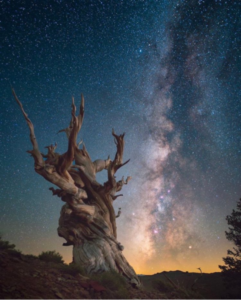
- Winter provides prime night sky viewing opportunities
- CSERC staff evolving to effectively lead key programs
- The Forest Service unveils SERAL 2.0
- Calaveras Big Trees State Park continues prescribed burn treatments
- The Amador Calaveras Consensus Group (ACCG) is poised to develop the largest forest treatment project in the region
- Wildlife in peril – a report on new federal designations or proposals for local species
- USFS adopts new national policies for applying fire retardant
- Progress report on the restoration project at Ackerson Meadow
Summer 2023 (click here to read or download newsletter)
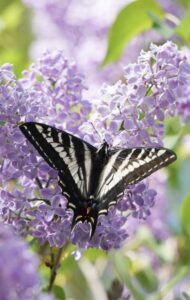
- Insight worth knowing – how the local region became a key national example for testing “good fire” at a larger scale
- For years conservation groups have pushed prescribed fire as the key strategy for managing forests. It’s not quite that simple.
- The thousands of acres of treatments done in the Stanislaus Forest this year help reduce the risk of extreme wildfires
- Beyond the views from the highway, this year’s prescribed burns reveal a range of mixed results
- Here are lessons learned, plus some trade-offs that come from greatly increasing the number of acres burned
- This exceptional weather year has resulted in an exceptional number of butterflies to delight those taking the time to observe them
- Completely separate from national forest burns, a prescribed fire last fall at Big Trees State Park ignited controversy over the “Orphans”
- As summer crowds cause traffic delays and congestion, Yosemite Park re-opens the public comment period for how to manage visitor use
- CSERC’s wildlife surveys help to inform agency biologists and planners
Spring 2023 (click here to read or download newsletter)
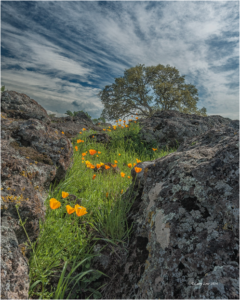
- You can currently choose winter or spring for outdoor adventures!
- COME VOLUNTEER to help with restoration projects in the region
- Acorn woodpeckers – also known as “oak tree clowns”
- Calaveras Big Trees State Park officials discuss forest health projects
- A new Forest Service plan would create miles of fuel breaks near Yosemite Park
- It’s that time of year again - spring wildflowers dazzle with their vibrant colors
- The 2023 CSERC Photo Contest is Officially Open!
- A plan to convert vacant shopping center buildings to housing
Winter 2023 (click here to read or download newsletter)
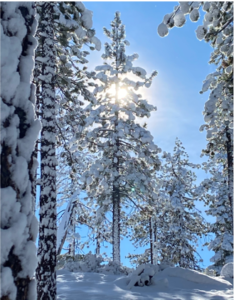 Your input may help shape the new “Visitor Access Plan” that is intended to resolve the debate over traffic and congestion in Yosemite
Your input may help shape the new “Visitor Access Plan” that is intended to resolve the debate over traffic and congestion in Yosemite- Surging recreational demands since the COVID shutdown along with social media and online marketing draw visitors to the Park
- Lessons learned - striving to get a Tuolumne County Climate Action Plan
- Winter hiking destinations – below the snowline
- Dispersed recreation destinations – above the snowline
- “Frogsicles” is one way to think of winter survival by frogs
- DIRECTORS REPORT: Thanks to so many who continue to partner with CSERC to make a difference for the Northern Yosemite region
- Agencies consider how to best conserve and manage federal forests to reduce threats to “mature and old growth” trees
- Fieldwork, post-fire monitoring, and viewing the effects of drought lead CSERC to support treatments in managed areas to protect old tree
- Initial treatments in new SERAL Project created miles of fuel breaks as anchor points for prescribed burns and to help crews manage wildfire
- The loss of a special person can remind us to savor our times together
Fall 2022 (click here to read or download newsletter)
- There are consequences from stocking trout for recreational sport
- Forest Service restarts its “paused” prescribed burn program after completing a nationwide review of the risks
- Unlike the Forest Service, Yosemite Park allowed lightning fires to burn “naturally” - with guidance - over many weeks of hot, dry conditions
- Volunteer workday efforts in the national forest helped protect degraded areas and streams from off-road-vehicle impacts
- Stanislaus Forest finally begins to implement forest treatments across the vast SERAL project area
- Looking for ecologically sustainable ways to meet local housing needs
- Planting hatchery fish may boost fishing success, but high numbers of planters can diminish the survival of native fish and other specie
- Results from CSERC’s 2022 meadow monitoring
- Scenic beauty is often a reflection of a healthy ecosystem
Summer 2022 (click here to read or download newsletter)
- So many amazing species share our mountain region
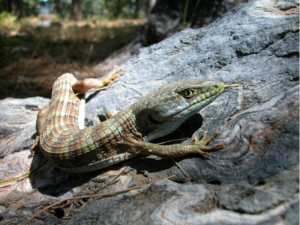
- Highly publicized escaped fires prompt Forest Service to temporarily halt all prescribed burns nationally to review protocols
- After the SERAL project was split into three separate “decisions” – fuel break work has begun, while other project actions inch through appeals
- Tuolumne County is on track to have at least three new biomass facilities built in the next few years - Should we be concerned?
- Field tour at Ackerson Meadow highlights upcoming restoration project
- New members of CSERC staff take on a wide range of fieldwork tasks
- A place in Yosemite Park where you can often avoid crowds
- The Harlequin Duck -- A most audacious waterfowl
- Camp Jack Hazard provides environmental education and backpacking opportunities for children from the Central Valley and Tuolumne County
Spring 2022 (click here to read or download newsletter)
-
- Most of us prefer environmental issues to be black vs white, good vs bad guys, and not too complex or technical
- Spring has sprung! It’s your chance to view wildflowers…
- A bully has arrived in town – and that means trouble for the local native species that was already facing habitat loss and other threats
- Forest Service gives approval to the first of three separate decisions for portions of the SERAL large landscape project
- You may have never seen a ringtail – yet they can be found in widely scattered locations across the local region
- CSERC’s new Conservation Director brings many skills and talents
- Here's your playbook for all the changes at Yosemite Park this year
Summer 2021 (click here to read or download newsletter)
- Field surveys help to identify where at-risk species need protection
- Legal negotiations continue for two
- Highway 120 development projects
- Lots of fieldwork and monitoring to squeeze in during the summer
- Is the charismatic porcupine on the brink of disappearing from the Sierra Nevada region?
- CSERC prepares to restart volunteer workdsays - Please sign up!
- Local Regional Forester Randy Moore named Chief of the Forest Service
- Agencies assess options for Ackerson Meadow restoration project
- Participation in local stakeholder groups demands lots of time, but it builds key connections that increase chances for success
- Please "PASS THIS NEWSLETTER ON"
- The status or fate of our region's gray wolf visitor is a mystery
Spring 2021 (click here to read or download newsletter)
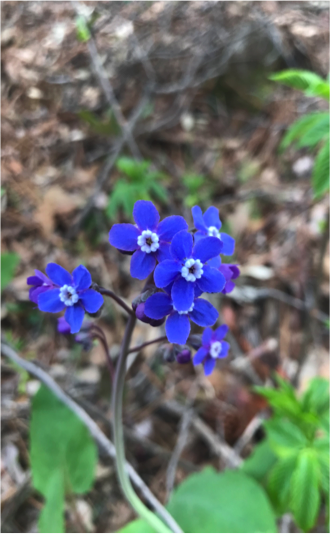
-
- Iconic Mariposa Grove closed due to wind/snow damage
- What is "30x30," and why is California making it a priority
- Look for the Common Merganser at lakes, streams, and rivers
- Updates on Phoenix Lake restoration and FERC hydroelectric planning
- Chicken Ranch Rancheria of Me-Wuk Indians reveal plans for a major new casino and hotel project west of Jamestown
- Decades of CSERC photo surveys help locate at-risk wildlife
- Last year's epic high-severity wildfires showed that decades of accumulated fuels haven't been effectively treated
- Heavily stocked forests that appear "natural" are actually far different from historic forests that evolved with frequent fires
- CSERC calls for "pyrosilviculture" as a key strategy - using prescribed burns and managed low-intensity wildfires to restore resiliency
- On April 20th, the 2021 CSERC photo contest will open
Fall 2020 (click here to read or download newsletter)
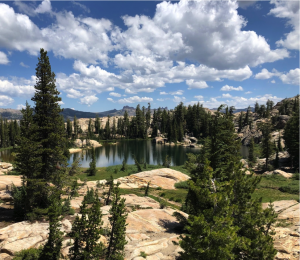 Sara Husby takes on the role of CSERC's Program Director
Sara Husby takes on the role of CSERC's Program Director- Agencies consider options for restoring Ackerson Meadow
- PG&E files formal Phoenix hydroelctric plan
- At last, work actually begins on the Phoenix Lake Restoration Project
- CSERC and citizen activists continue to oppose leap-frog development projects along the highway to Yosemite
- In contrast, a new lodging proposal for the Highway 120 "Scar" site might be appropriate for that location
- CSERC and YSS aim for middle-ground solutions to make local forests less vulnerable to damaging wildfires and drought
- The SERAL Project: Why does SCERC support the giant project plan?
- Three updates about issues that affect the local region
- Conservation needs to mimic the "Clothespin tree" in the Mariposa Grove
Spring 2020 (click here to read or download newsletter)
- Water Board proposes to lower the summer lake level at Pinecrest
- TUD seeks "local control" of South Fork Stanislaus River
- Long-delayed restoration project at Phoenix Lake finally ready to begin
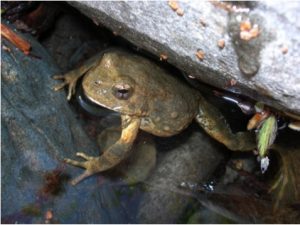
- State decides foothill yellow-legged frog deserves "endangered" status
- The USFWS proposes to list the extremely rare Sierra Nevada red fox
- Root rot fungus and mistletoe are affecting the health of red fir and white fir forests
- The State changes tree stocking standards for private timberlands
- Tree mortality from drought years creates fuel build-up and fire risk in Yosemite
- Local forest stakeholder groups help convince Forest Service to reduce potential controversy of Large Landscape Project
- CSERC attempts to raise awareness about the positive role of prescribed burning
Fall 2019 (click here to read or download newsletter)
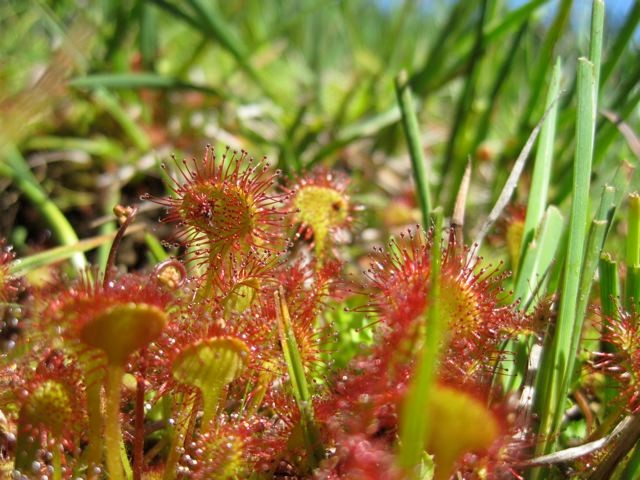 What are fens, and how do volunteer efforts protect them?
What are fens, and how do volunteer efforts protect them?- Park officials and gateway partners search for a solution to traffic congestion in Yosemite Valley
- Yosemite Park superintendent Mike Reynolds will be leaving due to a re-assignment
- Merced River Studies provide Park with options for deciding whether not to remove the Sugar Pine Bridge to allow free-flow conditions
- Calaveras Big Trees State Park plans to construct cabins to meet public demands for recreational lodging options
- Fuel reduction and biomass treatments in portions of the Rim Fire
State Wildlife agency describes Snake Fungal Disease in California - U.S. Fish and Wildlife finally proposes to list the West Coast Distinct Population of the Fisher as "Threatened"
- Quiet season fall destinations: Pinecrest and Hetch Hetchy
- Have you donated this year to help CSERC respond to the many challenges facing the Northern Yosemite region?
Summer 2019 (click here to read or download newsletter)
-
- Major changes coming in Yosemite National Park with restoration projects planned
- CSERC and the public share concerns about proposed leapfrog development projects
- Salvage logging goes forward in portions of the Donnell Fire area
- CSERC photo contest winners selected with a new category for landscape photos
- CSERC files an Objection to Forest Service decision to allow motorized use in two wild roadless areas
- SPI releases weak habitat plan for the spotted owl on private timber lands
- Volunteer with CSERC this summer or fall to help protect and restore the Stanislaus National Forest
Winter 2019 (click here to read or download newlsetter)
-
- Announcing the start of the 2019 photo contest!
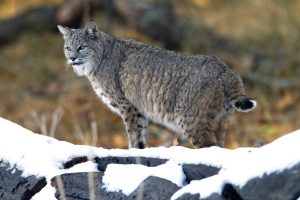
- Looking back at the history of CSERC
- CSERC works to protect valuable oak woodlands in the foothill
- Our efforts to inspire the next generation
- CSERC files litigation over Tuolumne County's pro-development general plan
- Check out CSERC's new interactive water quality web map
- YSS and Tuolumne County seek grants to do work on the national forest
- Tuolumne County Resource Conservation District offers assistance with rainwater catchment and more
- Two proposed SPI logging projects raise concerns
- Announcing the start of the 2019 photo contest!


